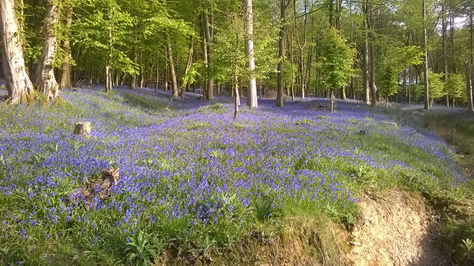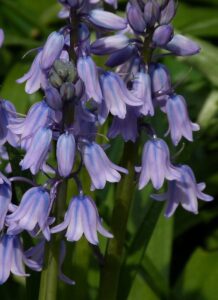 In case you missed it in the longer general post about re-opening, this is a quick reminder that the library cafe will be open this Monday 29th July from 2-4pm. Everyone welcome; come and browse the new selection of books and enjoy a cup of tea and a chat.
In case you missed it in the longer general post about re-opening, this is a quick reminder that the library cafe will be open this Monday 29th July from 2-4pm. Everyone welcome; come and browse the new selection of books and enjoy a cup of tea and a chat.
Author: Pauline
Woodlands at War Talk Friday 6th August 7pm
“Woodlands at War: The impact and legacy of WW1 and WW2 on Britain’s Woodlands” talk by Clive Mayhew
Talk at Dallington Village Hall, Friday 6th August, 7 pm start. No entrance fee, but donations to cover the cost of refreshments would be welcome.
Description: The substantial contribution made by British woodlands over two world wars has been somewhat overlooked in subsequent histories. This talk looks at those pre-war woodlands,describes the extent of their contribution during these conflicts, and assesses its post war legacy. Continue reading “Woodlands at War Talk Friday 6th August 7pm”
Sunday Bell Ringing
(Posted on behalf of Diana Day) The bell ringers met up last week to see if there was support for some ringing to begin again at St Giles Church, Dallington. I’m pleased to say that we rang on Sunday and hope to ring again in two weeks time. This follows the pattern set before, of ringing for 2nd and 4th Sundays. Practices are not possible at present and will not resume until the Autumn at the earliest. One of the ropes broke and the bell has set itself, so this has to be tipped over, safely. This will probably be done on Wednesday, you will just hear the bell ringing until it stops by itself when fully down. Diana Day
Village Hall re-opening soon!
We are finally reopening! After many months of waiting for national restrictions to be lifted, we can finally announce (fingers crossed) that Dallington Old School Village Hall will re-open for bookings from Monday July 19th. (All booking enquiries to Karen Gillingham on 01435 831563.) Continue reading “Village Hall re-opening soon!”
Plant a hedge for your community!
(Posted on behalf of Doug Edworthy, Dallington Tree Warden)
As part of the Tree Council’s year-long Close the Gap programme, their Community Hedge Fund is now open for applications. They will be awarding grants of up to £2,500 for volunteer Tree Wardens and community groups to plant new hedgerows, hedgerow trees and to gap up existing hedgerows in rural and urban areas across England this winter.
The deadline for applications is Sunday 8 August 2021. Your planting will need to take place between November and January. You can find out more about the fund and apply on The Tree Council website
New Dallington Tree Group
(Posted on behalf of Doug Edworthy)
Dallington Tree Group – Volunteers Please!
In our rural parish of Dallington we have some lovely examples of ancient and veteran trees dotted around our hedgerows, fields, and woods. These living ‘carbon lock-ups’ and special habitats for plants and animals are so very important to the environment and to us. But in Dallington we don’t actually know how many we have, what condition they are in, or whether they are facing risks from disease or potential damage.
I’m proposing to establish a Dallington Tree Group with three straightforward objectives: –
The survey phase will take the longest to do, and will need the assistance of volunteers to walk footpaths, etc., to collect data on trees and, where access is possible, to take measurements. I’ll train any willing volunteers in the measurement and assessment techniques required – so don’t worry if you haven’t done a tree survey before – and it will be fun!
If you can join our group, whether as an active walker of rights of way, someone with existing knowledge of special trees in the parish, or someone with IT database or admin skills, please get in touch with me, Doug Edworthy, via the email address treewarden@dallington.org.uk or my mobile number 07711 090 925.
Tree Warden (Champion), Brightling & Dallington Parish Councils treewarden@dallington.org.uk 07711 090925
Bell tolling today
(Posted on behalf of Diana Day)
Dallington Bellringers will be tolling a bell today to mark the Duke of Edinburgh’s death and again on the day of the funeral.
Watch Out for the Bluebells!
(Posted on behalf of Doug Edworthy)
The Bluebells are beginning to push their leaves above ground in preparation for the magnificent display they put on for us each year. But after seeing the recent damage to plants in Dallington Forest from off-road motor bikes I felt I should pen a short article about these beautiful flowers of ancient woodland.

Bluebells face two existential threats: competition with the more vigorous Spanish bluebell which has been escaping from gardens and hybridizing with our native species for 300 years, and the effects of change or disturbance (which is why they are an indicator of ancient, undisturbed woodland).
Hybridisation
There is a real danger of losing the genetic integrity of one of our best-loved native wildflowers, not to mention the spectacular colour and scent, because our native bluebell (Hyacinthoides non-scripta) readily cross-breeds with both its Spanish cousin Hyacinthoides hispanica, often planted in gardens, and with the resulting fertile hybrid Hyacinthoides hispanica x non-scripta. But, do you know the difference between the species?

Native bluebell Hyacinthoides non-scripta
This bulbous perennial, native to north-western Europe, seems to prefer slightly acidic soils and partial shade. Early in the growing season, they can be a dominant species in coppiced woods on light soils, but they are also found on hedge-banks and sea-cliffs.
The native bluebell’s deep violet-blue flowers have a strong sweet scent, the pollen is yellow and the flower stems droop or nod distinctively to one side.
White-flowered native bluebells are exceedingly rare. If you are tempted to take one home, please note: it’s against the law to intentionally pick, uproot or destroy native bluebells.

Spanish bluebell Hyacinthoides hispanica
This species, native to Portugal and western Spain, was first introduced in British gardens as an ornamental plant in the 1680s. It was favoured over the native because it can grow on almost any soil and has bolder blooms. It is a larger, more upright plant than the native bluebell. Its flowers range in colour from pale to mid blue, or white or pink, and has characteristically deep blue pollen but no scent. The Spanish bluebell was first recorded in the wild in the UK in 1909. This species is often confused with the hybrid and has therefore probably been over-recorded by botanists in the past.
Hybrid bluebell Hyacinthoides hispania x non-scripta
The Spanish bluebell readily cross-breeds with the native bluebell to form the fully fertile hybrid. The hybrid was first recorded in the wild in the UK in 1963 and is also extremely common in gardens. Hybrid plants can demonstrate characteristics of both the native and Spanish bluebells.
What can we do about the non-native bluebells? Well, plant only native bluebells in your garden and be on the lookout for Spanish or Hybrid bluebells in the wild. If you find some, let me know and/or Sussex Wildlife Trust. Please don’t uproot them unless they are on your land, and then only if you are absolutely sure they aren’t native.
Disturbance
The other threat comes directly from the impact of us walking where bluebells grow and, unintentionally or not, damaging them. It’s against the law to intentionally pick, uproot or destroy native bluebells.
During their active phase, which runs from February through until the leaves have died back in Summer, they are extremely susceptible to damage from our boots. Treading on the soft, succulent leaves damages them so they can no longer photosynthesis and they die back. This reduces their ability to put food back into their bulbs, reducing the plants’ ability to produce flowers and seeds.
Also, soil compaction damages the bulbs so they won’t appear next year. You can see the effect of this along many woodland paths where not keeping to paths during the bluebell season has widened the paths as the bluebells recede.
Bluebell colonies take a long time to establish – around 5-7 years from seed to flower, and can take years to recover after footfall damage so please keep to paths and resist the temptation to step into the blue for a selfie or a photo opportunity. Your feet could be doing more damage than you realise.
Enjoy the sight and scent of these wonderful flowers and take care where you tread so they will still be carpeting our woodlands for future generations to marvel at.
Wanted: Tree Champions in Brightling and Dallington parishes!
(Posted on behalf of Doug Edworthy, Tree Warden/Champion, Dallington & Brightling)
For a number of years, the two parishes have shared one Tree Champion. But there is no limit on the number a parish can have. This was brought home to me recently during a zoom webinar on the new Rother Tree Champion scheme during which I discovered some areas have a half a dozen or more. There are so many things that need to be done in our parishes and I really need some help doing them.
If this interests you, here’s what The Tree Council, the organization that set up the National Tree Warden scheme, says about the role (https://treecouncil.org.uk/take-action/tree-wardens/):
What Tree Wardens do
Tree Wardens plant, protect and promote their local trees. No training or experience in tree management is needed – just a love of trees and a few hours to spare. Tree Wardens are organised into local groups. Each group is managed by a co-ordinator and is autonomous, meeting regularly to decide what they would like to focus on.
Some of the projects Tree Warden groups have done include:
-
- Arranging local tree planting days
- Pruning, watering and giving vital aftercare to local trees after planting
Rejuvenating local woodlands in need of management
Raising funds and identifying suitable land for local tree planting projects
Going into schools to talk to young people about the value of trees.
To that list I would add:
-
- Surveying the tree stock of the parishes so that informed decisions can be made about planning and other activities that impact our trees, and
- Conducting guided walks for our parishioners.
Please get in touch if you think you could help (contact details below). You don’t have to be a tree expert (I’m not) – just enthusiastic!
Doug Edworthy, Tree Champion, Brightling & Dallington Parish Councils
Email: treewarden@dallington.org.uk Mobile: 07711 090925
Old School Newsletter & National Village Halls Week 25-29th January
 This month, Dallington Old School publishes our annual newsletter Old School News January 2021 to coincide with National Village Halls Week .
This month, Dallington Old School publishes our annual newsletter Old School News January 2021 to coincide with National Village Halls Week .
Organised by ACRE (Action with Communities in Rural England), Village Halls Week is “a national celebration of the 10,000+ village halls which can be found across England, their volunteers and the difference they make to the rural communities they serve” – this years theme is “Celebrating 100 years of village halls”. Find out more about NVHW and the programme of events -sadly all online this year due to Covid restrictions – at https://acre.org.uk/our-work/village-halls-week You can also follow us on Twitter (@DallingtonOSVH) to see how we’re joining in.
We also have our own entry in the new Village Halls Domesday Book, which is creating an online record “to demonstrate how important these buildings are, and what is needed to make sure they survive in the future”
Do take a look at our newsletter Old School News January 2021 FINAL to find out what the Old School Management Committee have been doing behind the scenes to maintain and improve the fabric of the building while we are closed and to implement new procedures so we can re-open safely and confidently when permitted to do so. We can’t wait to welcome you all back as soon as possible
